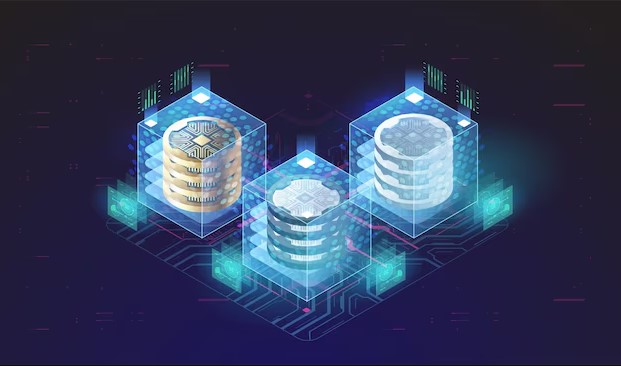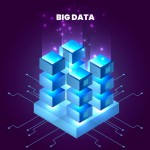5 Software Development Trends for 2025: Developers Are in Demand
— December 26, 2017Blockchain Development
Blockchain technology has evolved significantly since its early association with cryptocurrencies. By 2025, its applications are expected to penetrate deeper into industries such as supply chain, finance, healthcare, and even entertainment. Blockchain’s potential lies in its ability to provide secure, decentralized solutions, and the demand for skilled developers continues to grow at a rapid pace.
Global tech giants like IBM, Microsoft, and Amazon Web Services are vying for dominance in blockchain platforms, each offering robust tools for businesses to build decentralized applications. Governments and organizations across industries are increasingly exploring blockchain for its transparency, security, and efficiency. This creates an unprecedented need for developers who can design, implement, and manage blockchain-based systems.
In 2025, the developer landscape has shifted, with blockchain expertise being one of the most sought-after skills. In contrast to 2017, when there were only around 5,000 full-time blockchain developers worldwide, the figure has multiplied, but the demand still outpaces supply. Developers with knowledge of Solidity, Hyperledger, and other blockchain technologies stand to benefit immensely, especially in outsourcing markets like Vietnam. Companies such as S3Corp. and KMS Technology are actively building teams to cater to the rising demand for blockchain solutions.
IoT and the Expansion of Edge Computing
The Internet of Things (IoT) ecosystem has transformed everyday objects into interconnected devices. From smart homes to industrial automation, IoT is reshaping how data is collected and utilized. As devices proliferate, the challenge lies in managing the enormous amount of data they generate. By 2025, edge computing has become an integral solution for IoT, allowing data to be processed closer to its source instead of relying solely on centralized cloud systems.
Edge computing minimizes latency, reduces costs, and improves real-time analytics. This is critical for industries like healthcare, automotive, and manufacturing, where quick decision-making is essential. For example, in autonomous vehicles, edge computing ensures seamless operations by processing sensor data locally, enhancing safety and performance.
This shift requires developers to acquire expertise in building and managing edge infrastructure. Network engineers and database professionals are increasingly involved in designing IoT systems that balance local and cloud-based processing. Additionally, companies adopting DevOps and BizDevOps practices find that edge computing provides real-time insights, enabling faster and more informed strategic decisions.
Vietnam software outsourcing companies are also capitalizing on this trend, offering competitive services for edge-based IoT solutions. With the global IoT market booming, developers equipped with these skills will find ample opportunities to advance their careers.
Cybersecurity
As digital infrastructure expands, the risk of cyberattacks grows exponentially. In 2025, cybersecurity remains a top priority for businesses and governments alike. The proliferation of data breaches, ransomware attacks, and other cyber threats has underscored the need for robust security measures. Organizations are heavily investing in both internal and external cybersecurity strategies.
Internally, developers are integrating security into every stage of the software development lifecycle. This approach, known as DevSecOps, ensures vulnerabilities are identified and addressed early, reducing the likelihood of exploitation. Automation plays a pivotal role in these processes, enabling consistent and thorough testing.
Externally, cybersecurity startups continue to attract significant venture capital, with new solutions emerging to address evolving threats. However, the global shortage of cybersecurity professionals persists, with many organizations struggling to find qualified talent. This presents an opportunity for developers to specialize in cybersecurity, an area that not only offers job security but also allows them to contribute to safeguarding critical systems.
For developers in outsourcing hubs like Vietnam, the cybersecurity market represents a lucrative field. Companies, especially those specializing in web and mobile app development, such as S3Corp, are increasingly prioritizing secure coding practices to meet the demands of international clients.
Artificial Intelligence
Artificial intelligence (AI) has shifted from a novelty to a necessity. Businesses across all sectors now rely on AI to enhance efficiency, personalize customer experiences, and derive actionable insights from data. By 2025, the integration of AI technologies is no longer optional for companies seeking to maintain a competitive edge.
AI-driven tools are becoming more sophisticated, with advancements in natural language processing (NLP), computer vision, and predictive analytics. For example, AI-powered chatbots have revolutionized customer service, while machine learning models optimize supply chain logistics. The demand for skilled AI developers, particularly data engineers, continues to rise as organizations strive to leverage their data effectively.
The adoption of AI is not limited to large enterprises. Small and medium-sized businesses are also incorporating AI into their operations, facilitated by accessible platforms and cloud-based solutions. Developers with expertise in machine learning frameworks like TensorFlow and PyTorch, as well as a strong grasp of data science principles, are in high demand.
Vietnam outsourcing market has embraced AI, with companies providing specialized services in AI and machine learning. Developers working in this field not only secure high-paying jobs but also gain exposure to cutting-edge technologies that shape the future.
Virtual Reality
Virtual reality (VR) technology has matured significantly since its early commercial days. By 2025, VR has gained traction in areas such as gaming, education, training, and healthcare. The development of standalone VR headsets, coupled with advancements in content creation, has made VR more accessible and appealing to consumers.
Major players in the VR market, including Meta (formerly Facebook) and HTC, continue to innovate, introducing devices with improved performance and affordability. These developments are paving the way for mainstream adoption, with immersive experiences becoming more commonplace. For instance, VR is being used to train medical professionals, simulate dangerous work environments, and deliver interactive educational content.
For developers, VR presents an opportunity to create engaging applications that combine creativity with technical expertise. Skills in 3D modeling, game development, and VR platform integration are essential for those looking to enter this field. With the VR market expanding globally, Vietnam outsourcing firms are well-positioned to offer competitive VR development services, catering to the rising demand.
A Bright Future for Developers
The trends shaping software development in 2025 highlight the importance of continuous learning and skill development. Blockchain, IoT, cybersecurity, AI, and VR each represent areas with immense potential for career growth. Developers who stay ahead of these trends will not only enhance their employability but also contribute to innovations that redefine industries.
For outsourcing companies in Vietnam, these trends offer opportunities to expand their services and build expertise in high-demand areas. By focusing on emerging technologies, developers and businesses alike can thrive in an increasingly digital world.





